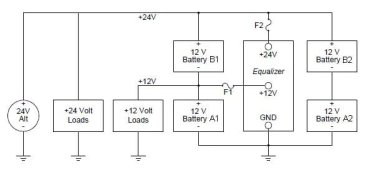Hello. I've tried to look but its kind of hard to find this kind of information. Most of the time people talk about converting 48-12 its for low draw loads. I put an SP6548 and 3 100 ah batteries in my 5th wheel but want to ditch the 120 lbs of the lead acid in there. I don't really feel like wasting money on more lithium 12v to go in there and would like to use the battery area for other things since I've taken up so much front storage with the server rack batteries. I'd much rather simplify and run everything off of the 48volt stuff and was looking at buck converters to run the whole 12v system off of but the biggest I can find from what looks like a reliable source is 60 amp. That could probably handle the water heater but I'm not so sure about the lippert leveling system. I've heard that can go up over 100amps at times.
I've also read that paralleling 2 converters is not that straight forward. Right now there is still a 120 - 13.6 (I think 80 amp but might be 60) that is on the trailer. From what I'm understand the problem with paralleling 2 converters is that one will always take most of the load? But I'm not sure why that would be an issue. Wouldn't that just mean that 1 runs the majority of the time until it cannot handle the load and the other would inevitably have to start supplying power?
I've also read that paralleling 2 converters is not that straight forward. Right now there is still a 120 - 13.6 (I think 80 amp but might be 60) that is on the trailer. From what I'm understand the problem with paralleling 2 converters is that one will always take most of the load? But I'm not sure why that would be an issue. Wouldn't that just mean that 1 runs the majority of the time until it cannot handle the load and the other would inevitably have to start supplying power?





